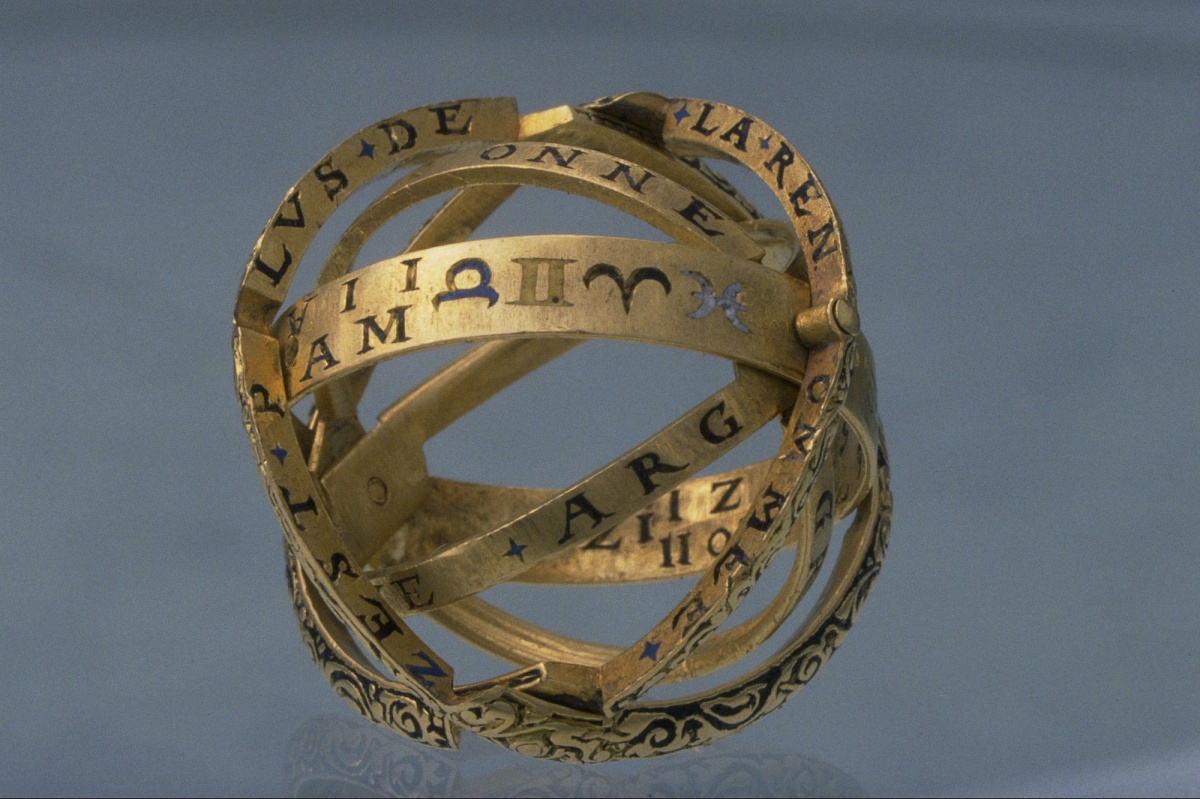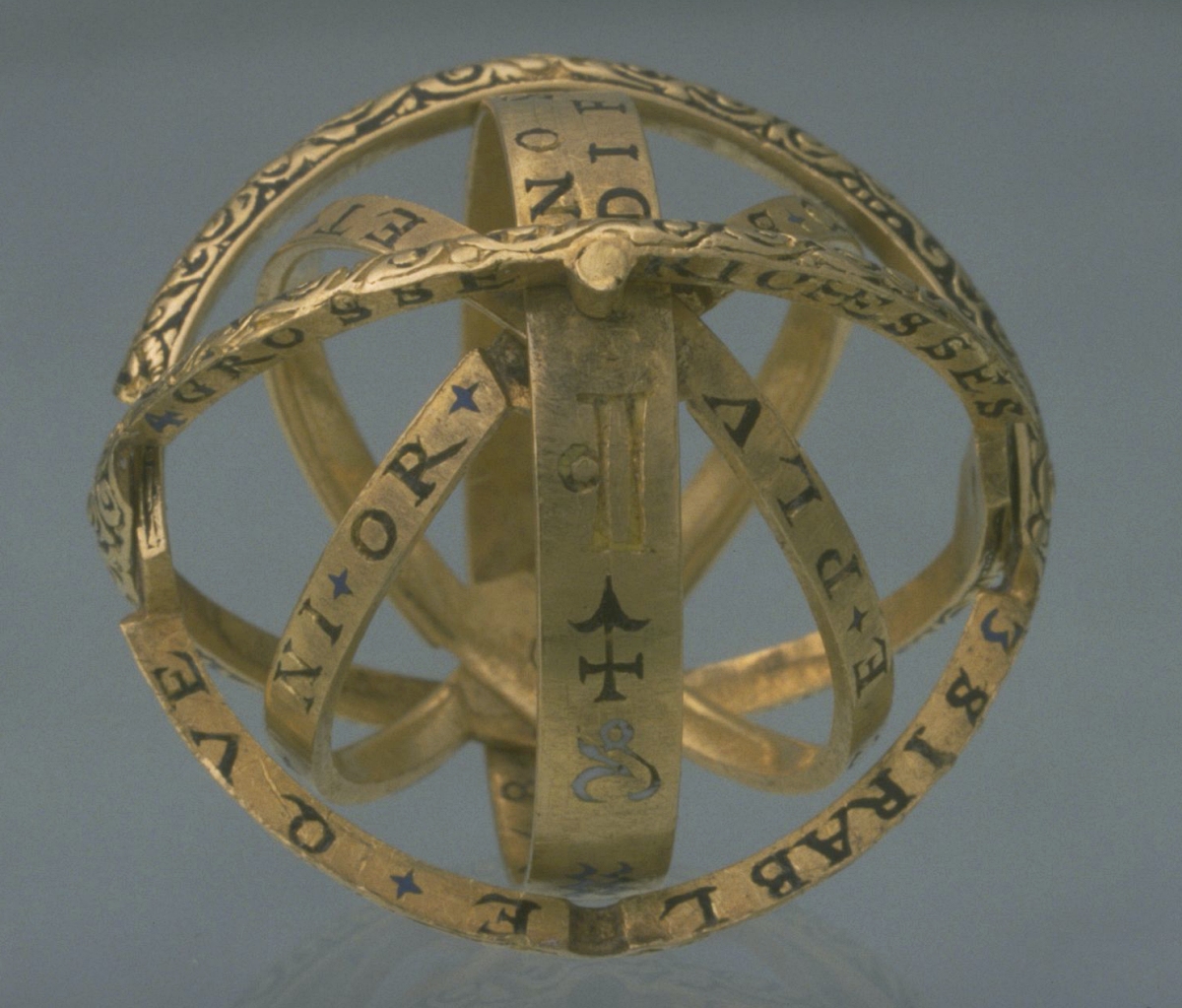Articulated 17th Century Ring Transforms into 3D Armillary
This thing moves in so many ways.
Look at it one way and it’s just a flat ring made of gold. But, open it up and this wondrous object becomes a 3D armillary- a model for the astrological and astronomical happenings of the sky. This particular example dates from Germany in the 1600s and is in the collection of the Historika Museet (Swedish History Museum) in Stockholm. This was the age of Enlightenment, but keep in mind that scientific advancements were not very far along at this time. Electricity, steam power, refrigeration, and most machine production methods were still hundreds of years in the future when this stunning ring was made.

To look at it flat there are no hinges visible on the outside. Instead, a charming filigree pattern reminiscent of clouds or waves adorns the exterior. The telltale sign that this is an articulated ring comes from what looks like a tiny button or round design feature. In fact this is actually a hinge pin rivet which allows the hidden rings inside to move about on the the rivet’s axis. One half of the exterior ring can also pivot on this pin.
Inside the ring the design motif changes from the enchanting wave pattern to reveal symbols long associated with the heavens. Some of the symbols may look like astrology references. In fact they refer to the position of the planets and sun, not for insights into human behavior, but to help calculate where and when to observe certain phenomenon.

According to the Museum of History and Science at Oxford, full size armillary tools could be “used not only to model the movements and relative geometry of the heavens, but to carry out all sorts of calculations such as the times of sunrise and sunset, the length of a day, and the altitude of the sun or stars.” The idea was that one would move the rings at increments according to precise calculations. When set correctly, everything above the horizon or axis line would theoretically be visible in the night sky.
Armillary objects are often in much larger sizes to allow one to see every detail up close and move the spherical rings in accordance with the hour, day, month, and year for accurate calculations. This tiny version may or may not have been workable for this purpose, but was a mirror of the scientific revolution that was radiating from Germany at the time.

Württemberg native Johannes Kepler authored the pivotal tome, Astronomia nova, in 1609 in Latin. This book laid out various elements of skies, but also published the results of 10 years of his observations on the movements of Mars and set into cannon the ways in which the planet of war moved.
Kepler went on to publish many other books about the solar system, music, and the burgeoning science of anatomy. He is remembered as one of the most influential scientific authors of his era, but Germany was a hotbed of information and curiosity about the heavens at the time.
For example, a number of large-scale, public, astronomical clocks were designed in the 15th-17th centuries in Germany. These were complicated devices that often took the expertise of several master horologists and astronomers combined in order to build. Some of these devices were seen as heretical, while others were placed on full display inside churches. But, these controversial new ideas swept through Germany and Europe and gave rise to an accepted public fascination with celestial objects.

It seems likely that this ring was made as a thing of beauty for a scientist or someone very interested in science. There is another ring very similar, also made in Germany in the 1600s, housed at the British Museum in London. That model originally had black enamel filling in the negative spaces of the filigree on the outside. It is appears that the Swedish History Museum ring also had some simliar treatment on the outside, with enameled elements of black and blue on the inner rings.
SKM: below-content placeholderWhizzco for DOT

